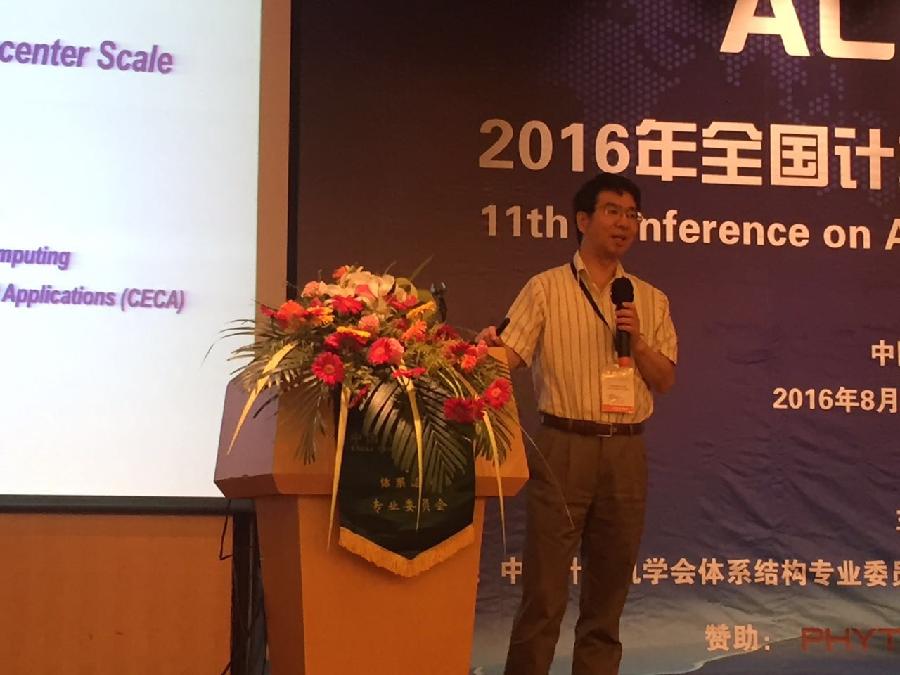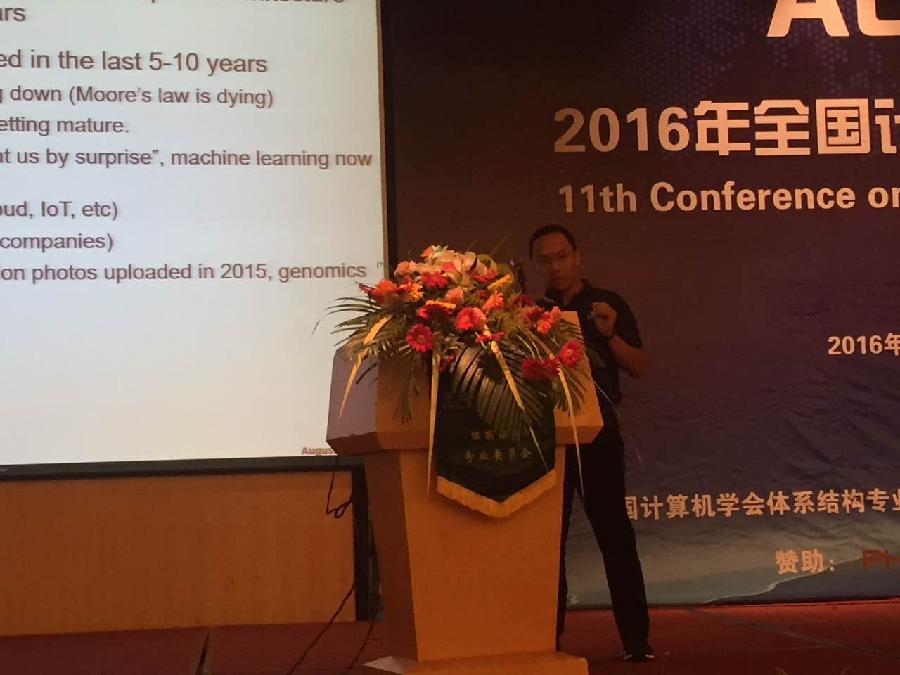2016年8月22-23日,2016年全国计算机体系结构学术年会在山东威海召开。中心主任丛京生教授、兼职教授谢源教授受邀作大会特邀报告。中心王韬老师、孙广宇老师、梁云老师等多位老师参会并作报告。

丛京生教授报告题目:Customizable Computing --- From Single-chip to Datacenters
报告摘要:In our 2008 proposal to the NSF Expeditions in Computing program, we argued that future computing systems would be customizable with extensive use of accelerators, as custom-designed accelerators often provide 10-100X performance/energy efficiency over the general-purpose processors. Such an accelerator-rich architecture presents a fundamental departure from the classical von Neumann architecture, which emphasizes efficient sharing of the executions of different instructions on a common pipeline, providing an elegant solution when the computing resource is scarce. In constrast, the accelerator-rich architecture features heterogeneity and customizaiton for energy efficiency, which is better suited for energy-constrained designs where the silicon resource is abundant. Our research program on customizable computing turned out to be very timely and impactful -- with Intel’s $17B acquistion of Altera completed in December 2015, customizable computing is going from advanced research projects into mainstream computing technologies.

谢源教授报告题目:Technology-driven and Application-driven Architecture Innovation: Past, Present, and Future
报告摘要:The interaction between computer architecture and IC technology is complicated and bi-directional. Emerging technologies, such as 3D integration and new non-volatile memories, affect the decisions computer architects make, while the developments in computer architecture also influences the viability of different technologies. On the other hand, emerging applications, such as machine learning and VR/AR, also provide new drivers and pose new challenges for future architecture design. In this talk, the speaker first will review the trends in computer architecture research topics in the past 25 years, and use 3D-integration as an example to demonstrate the interaction of architecture and technology, transforming the technology from research exploration to finally commercial adoption in architecture. Then emerging NVM technology and neuromorphic computing will be discussed as examples of the influence of emerging technology and emerging application on future architecture research. As our community embarks upon the post-Moore's Law era and looks towards a post-CMOS life, technology-driven and application-driven architecture innovations will become the keys for future computer architecture research.
更多信息,请见大会官方网站:aca2016.tcarch.org/dates.html